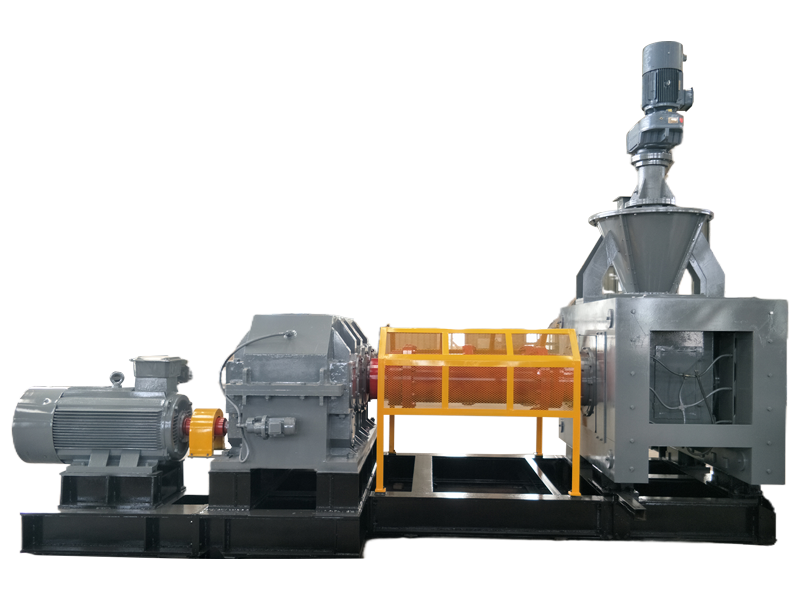What are the important components of a ball press machine?
Time:Nov 19,2022
The ball press machine is primarily used to compress powdery materials that are difficult to shape into solid forms. Our company’s ball press machines can effectively form a wide variety of dry powders, including lime powder, aluminum ash powder, concentrate powder, shale powder, iron powder, anthracite powder, mineral powder, silico-manganese powder, light-burned magnesium oxide powder, and metallurgical protective slag—among many others. These machines are widely applied across industries such as refractories, metallurgy, chemical processing, mining, steel plants, and metallic magnesium production. Materials processed into shaped balls using the ball press machine are not only environmentally friendly and cost-effective but also easy to transport. This process significantly enhances the utilization of waste materials while delivering substantial economic and social benefits.
During the material compaction and shaping process, the briquetting machine requires pressure adjustments tailored to the specific characteristics of the material. This is why the gearbox configuration of the briquetting machine plays a crucial role. The gearbox motor directly influences both the forming pressure of the machine and the final quality of the resulting pellets. Additionally, gearboxes can also function as speed increasers or reducers, making them indispensable components that significantly impact the efficiency and performance of the briquetting process.
The motor connection work for the ball press equipment must be carried out exclusively by a qualified electrician.
First, inspect the connections of all electrical components on the distribution panel. Check whether the terminal connections are loose, and ensure there are no stray wire ends bridging between the connections. Then, energize the main power supply while simultaneously connecting the grounding system. After powering up each individual device, run the motors without belts attached—just the motors themselves—to verify that their rotation direction matches the equipment’s intended motion. Once this step is confirmed, carefully install the V-belts and perform another no-load test with the full system running. Only after all individual machines have operated smoothly under no-load conditions should you proceed to conduct a full-line no-load trial run.
When switching, check the load status of each meter on the distribution panel.
Operation of the gearbox in the ball-pressing machine equipment:
First, adjust the center support and securely fasten the fixing bolts between the center support and the reducer frame. Ensure that the splicing alignment of the conveyor belt is perfectly matched with the belt edges. Next, adjust the tension of the conveyor belt so that its lower edge rests snugly against the top edge of the center support’s moving roller. Finally, run the empty machine briefly to check for any misalignment or deviation.
The working adjustment process for the pressure rollers of the ball press equipment:
Adjust the tension of the V-belt according to the specified tension requirements; to adjust the gap between the two rollers, simply press down or lift the wedge-shaped iron. After performing a no-load trial run and confirming there are no abnormalities, proceed with feeding material and gradually applying the test load. Observe the state of the extruded material—ideally, it should form flaky or blocky shapes. When gently squeezed by hand, it should feel firm enough not to crumble into powder under moderate pressure.
How to properly maintain the key components of a ball press machine: pulleys, lubricating oil, and bolts
On the ball press equipment, the main components that require regular maintenance are the pulleys, lubricating oil, and bolts—these are also the key parts we focus on to ensure the equipment runs smoothly. So, how can we properly maintain these three essential elements to keep us fully satisfied?
Belt Pulley: Normally, we emphasize that the drive belt of the mineral powder ball press machine should be tightened properly to prevent potential hazards and ensure smooth operation. However, tightening the belt pulley too much isn’t ideal—over-tightening the drive belt can lead to stretching, deformation, and even bending or damage to both the pulley and bearings.
Engine Oil: Regularly check the mineral powder briquetting machine's oil level to ensure it’s appropriate, helping to minimize unnecessary wear on the machine’s components. However, more oil isn’t always better—excess oil can cause severe vibrations in the crankshaft and connecting rods during engine operation. This not only increases internal power loss but also accelerates oil degradation over time.
Bolts: There are numerous bolts and nuts used to secure the components on the ball press machine. It’s crucial to ensure they have adequate preload, but care must be taken not to overtighten them. Over-tightening can cause deformation in the bolted joints, reducing the preload—and in extreme cases, even leading to stripped or broken bolts.
We provide professional briquetting machine equipment and competitive quotes.
We will contact you within 24 hours of receiving your message.
Tel:+86-13703990669
Tel:+86-18182214485
Email:zzhxjixie@126.com
Address: Longgang Development Zone, Xingyang City, Zhengzhou City, Henan Province

Email:zzhxjixie@126.com
Tel:+86-13703990669
Tel:+86-371-64696918
Address: Longgang Development Zone, Xingyang City, Zhengzhou City, Henan Province
Leave a Message
The need for specialized plant growth regulators











